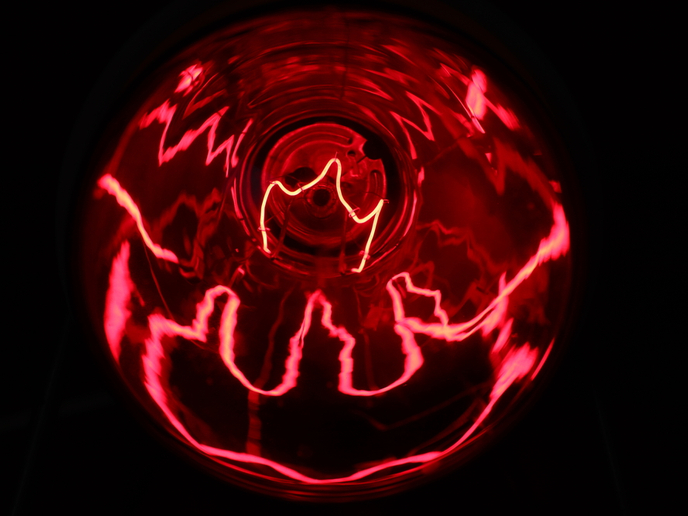Detecting the invisible: Researchers find a way to see infrared light
A recent study published in the journal ‘Science’ demonstrates a new approach to detect typically invisible infrared light. Supported by the EU-funded THOR, POSEIDON, PICOFORCE and BioNet projects, the research is paving the way for cost-efficient, large-scale infrared detectors and spectroscopic techniques for monitoring greenhouse gas emissions, tracking cancers and remotely sensing the outer universe. Infrared waves are the last band of the electromagnetic spectrum before we reach visible light. Although in most instances invisible to the human eye, infrared light can be felt as heat. Mid-infrared light – the region in the middle of the infrared band – has a frequency range between 20 and 215 terahertz, emitting moderate heat compared to the near- and far-infrared regions. To detect this weak mid-infrared light, scientists currently use expensive and energy-intensive devices that need to be cooled to very low temperatures. To solve the problem, the EU-backed research team found a way to convert the light to visible frequencies where it can be easily and efficiently detected and measured.
The trick to trapping the light
The team used a single layer of molecules to trap the multiple frequencies of mid-infrared light inside their vibrating chemical bonds. As reported in a news release posted on ‘ScienceDaily’, the vibrating molecules donate their energy to the visible light they encounter, converting the frequency of the mid-infrared photons to a higher frequency. This upconversion results in light emissions that are easily detected by today’s visible-light cameras. The challenge was to ensure the vibrating molecules met the visible light quickly enough, according to the news release. “This meant we had to trap light really tightly around the molecules, by squeezing it into crevices surrounded by gold,” explains the study’s first author Dr Angelos Xomalis of THOR and POSEIDON project partner and PICOFORCE project coordinator University of Cambridge. The researchers sandwiched single layers of molecules between a mirror and tiny pieces of gold. “Trapping these different colours of light at the same time was hard, but we wanted to find a way that wouldn't be expensive and could easily produce practical devices,” observes study co-author Dr Rohit Chikkaraddy, also from the University of Cambridge, in the same news release. By showing it is possible to integrate such infrared detectors onto silicon wafers, the team created the first successful devices in the emerging field of molecular optomechanics. University of Cambridge professor and study corresponding author Jeremy Baumberg describes the achievement: “It’s like listening to slow-rippling earthquake waves by colliding them with a violin string to get a high whistle that’s easy to hear, and without breaking the violin.” The THOR (TeraHertz detection enabled by mOleculaR optomechanics) project ends in August 2022. POSEIDON (NanoPhOtonic devices applying SElf-assembled colloIDs for novel ON-chip light sources) and BioNet (Dynamical Redesign of Biomolecular Networks) end in 2023, while PICOFORCE (Pico-Photonic Forces at the Atomic Scale) concludes in 2025. For more information, please see: THOR project website POSEIDON project website PICOFORCE project BioNet project
Keywords
THOR, POSEIDON, PICOFORCE, BioNet, light, infrared, visible light, molecule, mid-infrared, sensing



